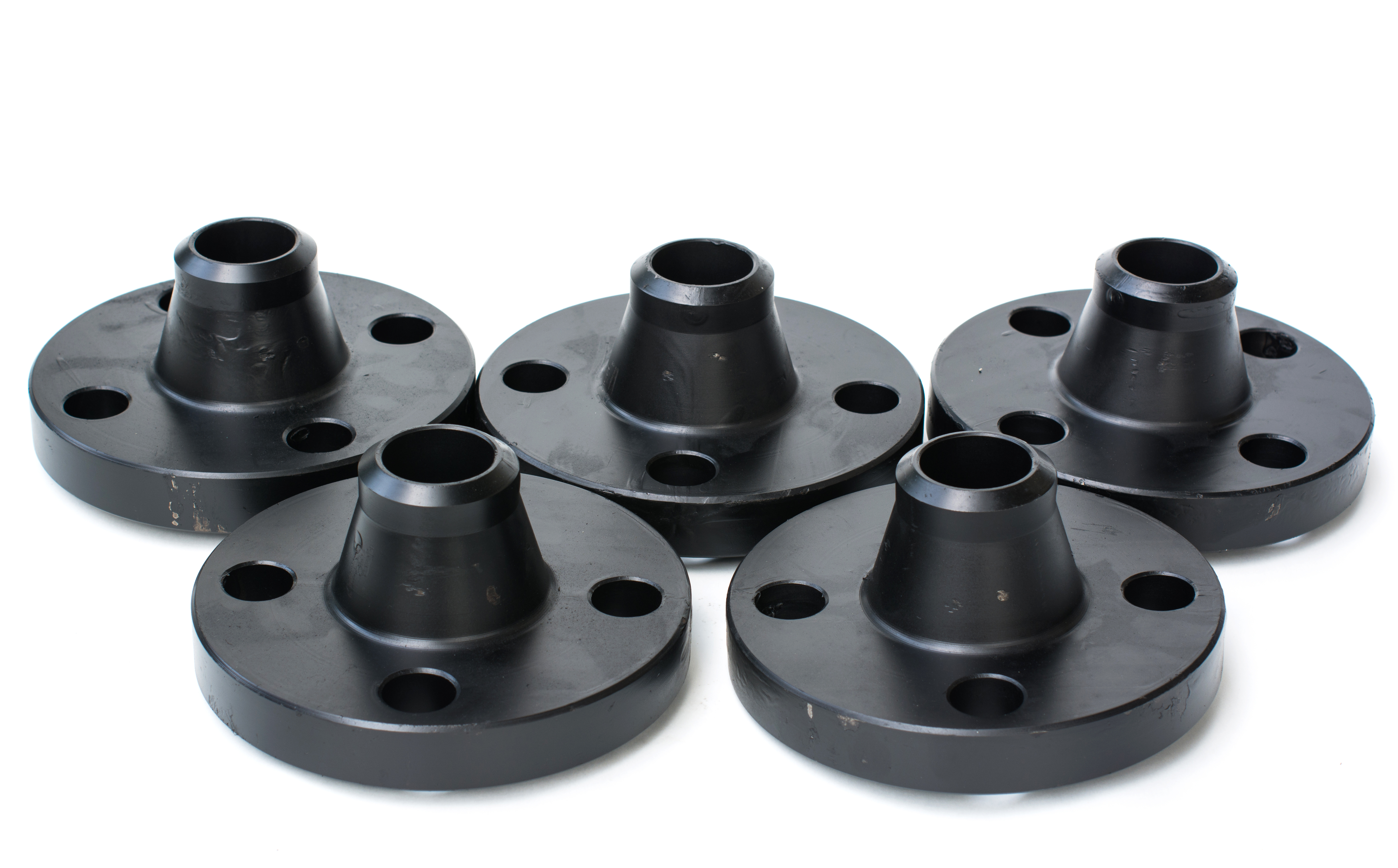Pipe Flanges

Steel flanges are essential components used in piping systems to connect pipes, valves, pumps, and other equipment. They provide a means for easy assembly, disassembly, and maintenance of pipelines while ensuring leak-proof connections. Here's a comprehensive overview of steel flanges:
-
Composition:
- Steel flanges are typically made from carbon steel, stainless steel, or alloy steel. The choice of material depends on factors such as the application, pressure, temperature, and corrosive environment.
- Carbon steel flanges are commonly used for general-purpose applications, while stainless steel flanges are preferred for corrosive environments or applications requiring hygiene, such as food and pharmaceutical industries.
- Alloy steel flanges are utilized in high-pressure and high-temperature applications where enhanced strength and corrosion resistance are necessary.
-
Types of Steel Flanges:
- Weld Neck Flanges: These flanges are designed with a long tapered neck that is welded to the pipe, providing strength and structural integrity. Weld neck flanges are suitable for high-pressure and high-temperature applications.
- Slip-On Flanges: Slip-on flanges slide over the pipe and are then welded in place. They are easy to install and are ideal for low-pressure applications.
- Socket Weld Flanges: Socket weld flanges have a recessed area (socket) to accommodate the pipe, which is then welded in place. They are commonly used for small-diameter, high-pressure piping systems.
- Threaded Flanges: Threaded flanges have threads on the inner bore that match the pipe's external threads. They are screwed onto the pipe and are suitable for low-pressure applications.
- Blind Flanges: Blind flanges are used to close the end of a pipe or vessel. They are commonly used in piping systems where maintenance or inspection points are required.
- Lap Joint Flanges: Lap joint flanges consist of two separate components: a stub end and a backing flange. The stub end is welded to the pipe, while the backing flange slides over the pipe and is free to rotate, allowing for easy alignment during installation.
-
Sizes and Pressure Ratings:
- Steel flanges come in various sizes and pressure ratings to accommodate different piping system requirements. They are available in sizes ranging from 1/2 inch to several feet in diameter and pressure ratings ranging from 150 lbs to 2500 lbs or higher, depending on the flange type and material.
-
Applications:
- Steel flanges are widely used in various industries, including oil and gas, petrochemical, chemical processing, power generation, water treatment, and HVAC (heating, ventilation, and air conditioning) systems.
- They are used to connect pipes, valves, pumps, and other equipment in piping systems, providing a secure and leak-proof connection.
- Steel flanges are essential in piping systems where frequent assembly, disassembly, or maintenance is required, as they allow for easy access to the system components.
-
Advantages:
- Versatility: Steel flanges come in various types, sizes, and pressure ratings, allowing for customization to meet specific project requirements.
- Reliability: Steel flanges provide a secure and leak-proof connection, ensuring the integrity of piping systems even under high-pressure or high-temperature conditions.
- Ease of Installation: Many types of steel flanges are designed for easy installation, reducing downtime and labor costs during assembly.
- Durability: Steel flanges are durable and resistant to corrosion, erosion, and wear, ensuring long-term performance and reliability in demanding applications.
Steel flanges are indispensable components in piping systems, providing essential connections and ensuring the integrity and efficiency of fluid transportation in various industries. Whether in petrochemical plants, refineries, or industrial facilities, steel flanges play a critical role in maintaining safe and reliable operations.
